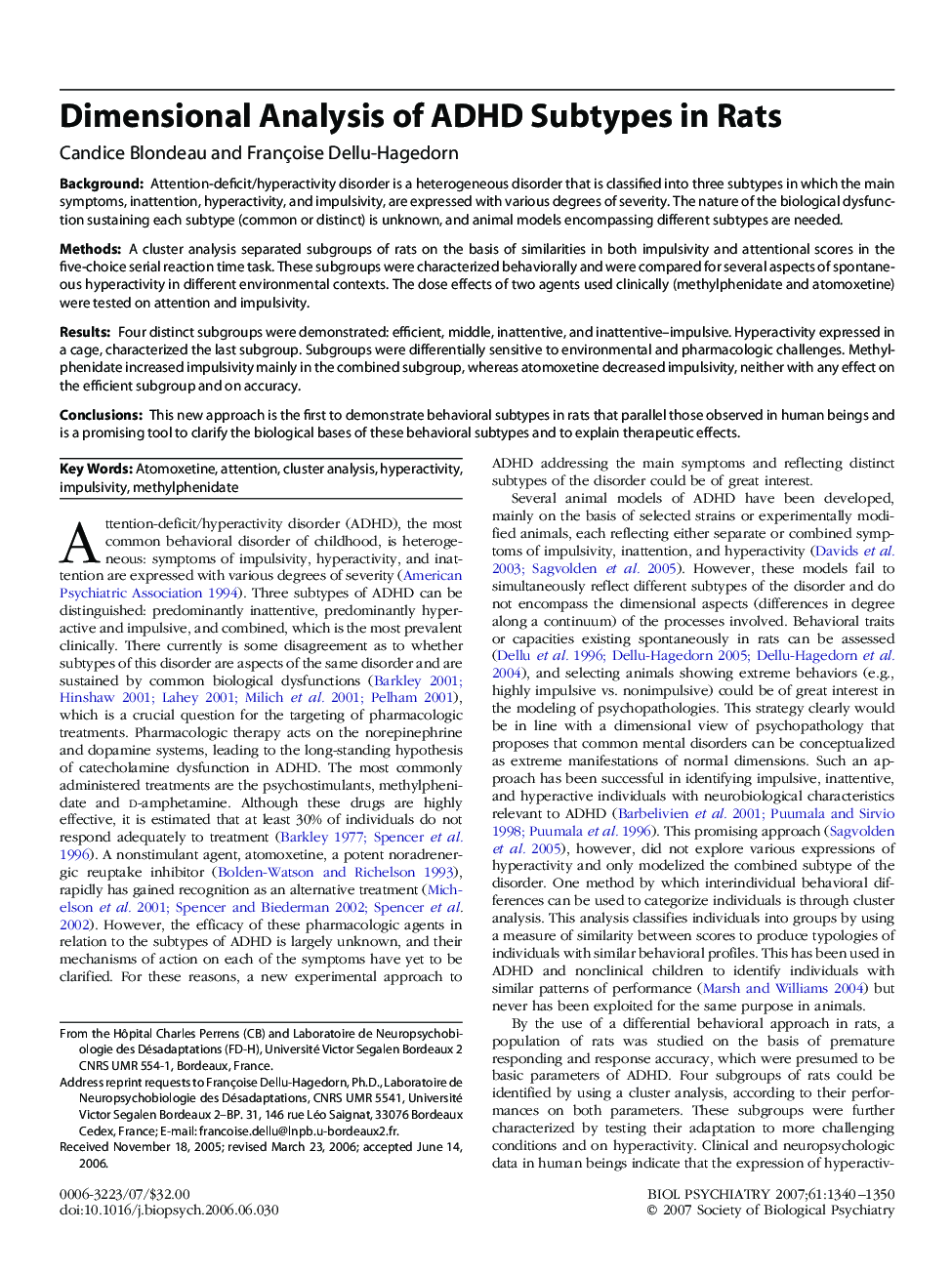| Article ID | Journal | Published Year | Pages | File Type |
|---|---|---|---|---|
| 4179700 | Biological Psychiatry | 2007 | 11 Pages |
BackgroundAttention-deficit/hyperactivity disorder is a heterogeneous disorder that is classified into three subtypes in which the main symptoms, inattention, hyperactivity, and impulsivity, are expressed with various degrees of severity. The nature of the biological dysfunction sustaining each subtype (common or distinct) is unknown, and animal models encompassing different subtypes are needed.MethodsA cluster analysis separated subgroups of rats on the basis of similarities in both impulsivity and attentional scores in the five-choice serial reaction time task. These subgroups were characterized behaviorally and were compared for several aspects of spontaneous hyperactivity in different environmental contexts. The dose effects of two agents used clinically (methylphenidate and atomoxetine) were tested on attention and impulsivity.ResultsFour distinct subgroups were demonstrated: efficient, middle, inattentive, and inattentive–impulsive. Hyperactivity expressed in a cage, characterized the last subgroup. Subgroups were differentially sensitive to environmental and pharmacologic challenges. Methylphenidate increased impulsivity mainly in the combined subgroup, whereas atomoxetine decreased impulsivity, neither with any effect on the efficient subgroup and on accuracy.ConclusionsThis new approach is the first to demonstrate behavioral subtypes in rats that parallel those observed in human beings and is a promising tool to clarify the biological bases of these behavioral subtypes and to explain therapeutic effects.
